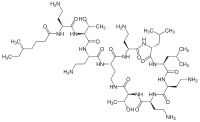
Photo from wikipedia
Mixed strain infections of Mycobacterium tuberculosis make diagnosis, treatment, and control of tuberculosis (TB) more difficult. This study was aimed to evaluate the relationship between mixed infections, antibiotic resistance patterns… Click to show full abstract
Mixed strain infections of Mycobacterium tuberculosis make diagnosis, treatment, and control of tuberculosis (TB) more difficult. This study was aimed to evaluate the relationship between mixed infections, antibiotic resistance patterns and treatment of TB patients. In this study, among 2850 suspected TB clinical samples, a total of ninety-six clinical samples from 66 TB confirmed patients were subjected to the 24-locus variable-number tandem repeat method to evaluate the prevalence of mixed infections. For all studied strains, 288 colonies (three individual clones for each sample) were isolated from different colonies and separately analyzed by the Drug Susceptibility Test (DST). For all patients, follow up was done after 6 months of treatment. Based on direct 24 loci MIRU-VNTR, in the 66 TB patients, 53% (35/66) showed mixed infection. In the mixed samples, 45.71% (16/35) showed different antibiotic resistant patterns. Among the mixed infection patients, eight (22.9%; 8/35) showed treatment failure after six- month therapy. Six of these non-treated patients (75%; 6/8) had different antibiotic resistant patterns. We conclude that mixed infections, have a negative impact on treatment of TB patients especially when co-infecting M. tuberculosis strains display heteroresistance.
Journal Title: Scientific Reports
Year Published: 2017
Link to full text (if available)
Share on Social Media: Sign Up to like & get
recommendations!